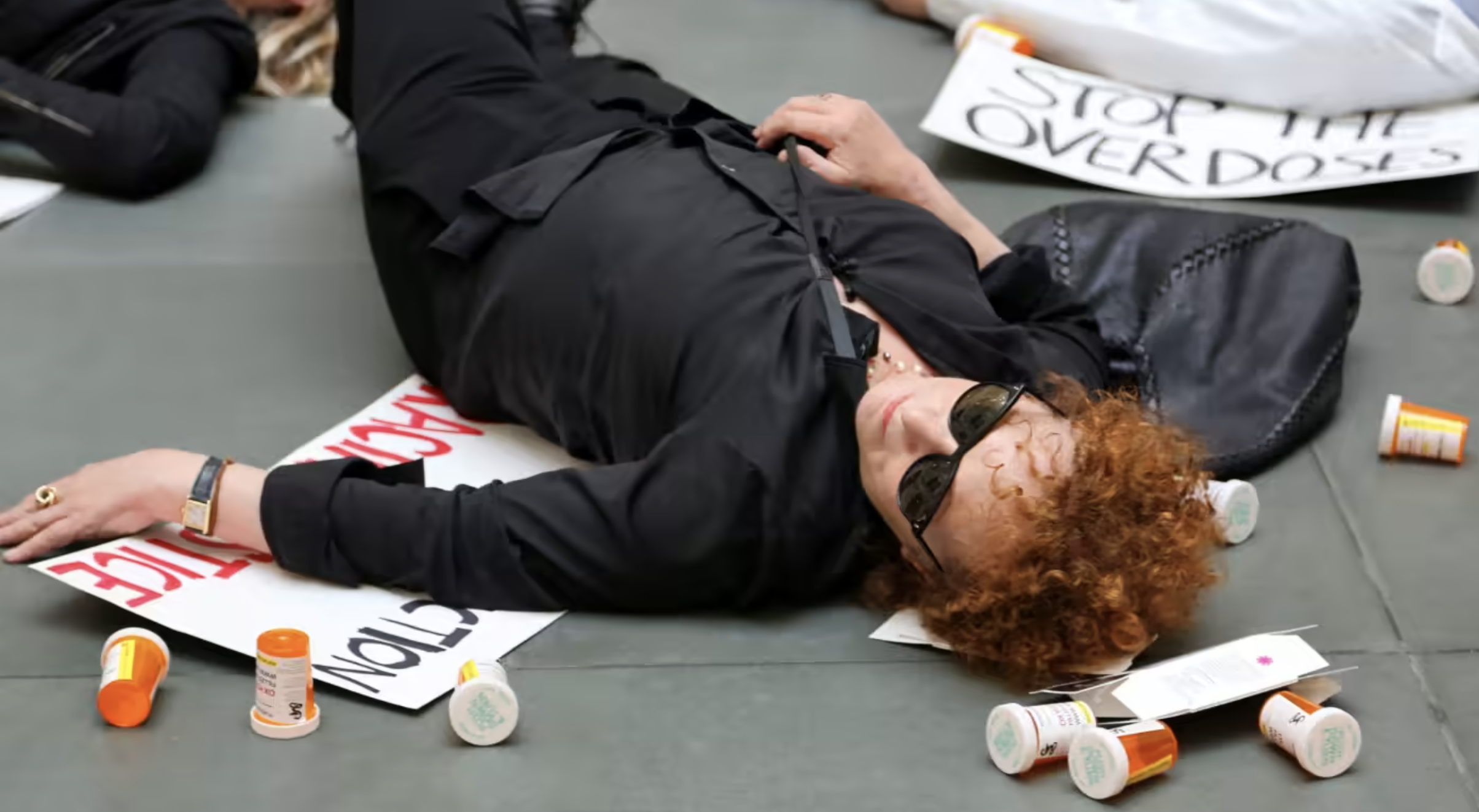All the Beauty and the Bloodshed
Director/ Laura Poitras
Watched on Amazon
Rating 3/5
Two compelling story lines compete for the attention of both the audience and the director in Laura Poitras’ All the Beauty and the Bloodshed. One narrative is a straightforward biography of photographer Nan Goldin’s career. The other narrative is a less straightforward, but still rather basic, depiction of the protests Goldin and fellow activists organized to force art institutions to stop taking philanthropic donations from the notorious Oxycontin-pushing Sackler family and to force the removal of the Sackler name from the rooms and galleries within those institutions.
Before watching the film, a quick internet check will reveal the success of their activism, which renders any dramatic pay-off from these scenes moot. So, as an audience, we watch the mechanics of that activism in action: casual meetings in living rooms, street protests in front of museums, and flash mob-type ambushes within the museums, with people staging die-ins and throwing empty Oxycontin pill bottles from balconies. These scenes have the intended effect; they are bracing in their immediacy and boldness, and you applaud and identify with the righteous cause. But as cinema, the scenes have little to offer.
The same is true of the biography part of the film. Since the film was co-produced and narrated by Goldin (and probably co-directed by her as well), Poitras’ role is one of serviceable collaboration. There is nothing remarkable in the filmmaking, since Goldin’s photographs are remarkable enough: stark documentary portraits of misfit New Yorkers struggling to find their tribe, or desperately trying to stay alive within their tribe: the drifting subculture of Lower Manhattan, with its drug-addicted artists, its gender-fluid transients, its young and fragile people alive to the moment but weighted down with traumatic family histories. Goldin’s own history consists of distant parents and an older sister’s suicide. These sections are moving, and Goldin’s work, when viewed through this lens of dignity and respect for the friends and colleagues she’s photographed through the decades, acquires a quality of compassionate rescue. You can trace the line from the activism of her photography to the activism of her anti-Sackler protests.
But, although her artistic sensibility is open, aesthetically rough-edged, and never self-regarding, Goldin (and the movie’s) insistence on memorializing her subjects and their often-dreary ends tends to wear on the viewer who may not buy the idea that Manhattan-centric artistic misfits are somehow more noble and profound than artistic misfits in, say, Omaha or Spokane, and therefore their numbing lives and sad deaths must be more tragic. The film’s sidestep into Goldin’s AIDS activism hammers this point even more, and seems both too on-the-nose and off-topic.
What we have then is a bifurcated project–not really a film–that tells two distinct stories side-by-side without finding a way to meld them. Poitras has made the now-common error of letting the subject matter–and the subject–control the film, rather than formulating a coherent and artistic point-of-view.

